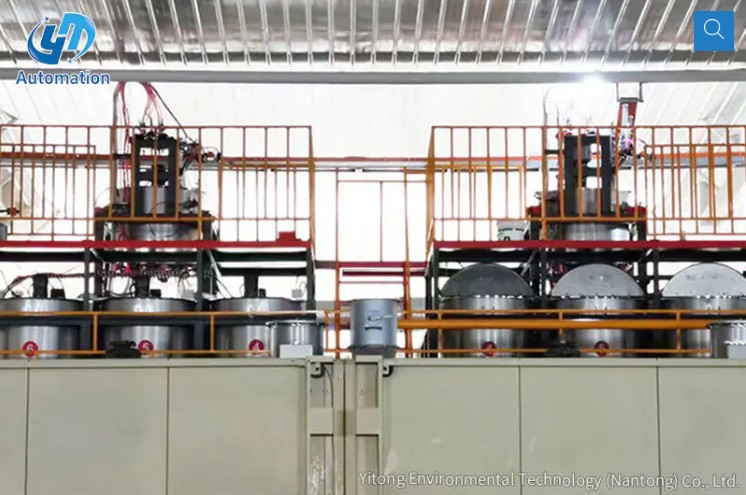Amid the accelerating transformation of the manufacturing industry towards intelligent manufacturing, the upgrading of dipping production lines is becoming a key breakthrough in improving production efficiency. Traditional dipping lines often face issues such as process connection delays, large manual control errors, and high energy consumption. However, the next-generation, intelligently upgraded impregnation line is delivering a "faster and smoother" production experience through technological innovation.
Pain Points of Traditional Production Lines: Efficiency Bottlenecks Urgently Need to Be Overcome
In the past, the dipping production process, from raw material pretreatment to dipping solution mixing, temperature control, and post-drying, relied heavily on manual operation or single mechanical transmission. The traditional impregnation line not only required multiple workers working in shifts to monitor the process, but also often suffered from temperature fluctuations, leading to a decrease in product quality. Any delays in process connection significantly impacted the daily production capacity of the entire
impregnation line. In addition, different materials (such as wood, textiles, and metal parts) have significantly different requirements for the impregnation process. The "fixed parameter" model of the traditional impregnation line is difficult to adapt flexibly, and debugging during production changeovers is often lengthy, severely hindering the delivery efficiency of small-batch, multi-category orders.
The Core of Intelligent Upgrade: Connecting the Entire Production Chain with Intelligence
The breakthrough of the new generation of intelligent impregnation line lies in building a closed-loop system of "perception-analysis-decision-execution" through the Internet of Things (IoT), artificial intelligence (AI), and automated control technologies.
Real-time perception and precise control are the foundation of intelligent upgrades for the impregnation line. Multiple sensors on the impregnation line collect real-time data on key parameters such as impregnation liquid concentration, temperature, pressure, and material transfer speed. The high frequency of data transmission ensures that the central control system accurately monitors the status of every node on the impregnation line. AI algorithms automatically match optimal process parameters based on the material quality. A PID (proportional-integral-differential) control system minimizes temperature fluctuations, significantly improving product quality of the impregnation line.
Process coordination and flexible production of the impregnation line significantly shorten production cycles. The intelligent system of the impregnation line uses digital twin technology to create a virtual production line, simulating the production process for different orders in advance and optimizing the flow of process transitions. When production changes are needed, the impregnation line system automatically calls up pre-stored process plans, allowing a robotic arm to quickly replace dipping tank components, significantly reducing commissioning time and effectively improving the processing capacity of the impregnation line for small-batch, multi-category orders.
Energy consumption optimization and intelligent early warning systems of the impregnation line help companies reduce costs and increase efficiency. The impregnation line system analyzes historical energy consumption data to automatically adjust equipment operating power. For example, it adjusts the dryer's heating power and conveyor speed appropriately during different hours, reducing standby power consumption and overall energy consumption of the impregnation line. Furthermore, AI algorithms of the impregnation line predict potential failures based on equipment operating data, providing early warning of equipment issues and avoiding losses caused by unplanned downtime of the impregnation line.
Implementation Results: From "Reactive Response" to "Proactive Control"
The implementation of the intelligent impregnation line can bring significant changes in many areas: reducing the number of production line operators on the impregnation line, requiring only a small number of personnel for monitoring and exception handling; increasing daily production capacity of the impregnation line, and reducing dipping liquid consumption per unit product. Workers no longer need to constantly monitor dashboards and record data of the impregnation line; they can now access real-time production data of the impregnation line through a mobile app. The impregnation line system also automatically sends notifications of any anomalies, transforming operations from "working around the machine" to "the machine following instructions."
Furthermore, the production data accumulated by the intelligent impregnation line system has become a crucial basis for optimizing management. By analyzing the correlation between the impregnation results of different batches and process parameters on the impregnation line, the company can continuously iterate its process plans. Data analysis based on order completion times of the impregnation line enables more precise production planning and shortens delivery cycles.

